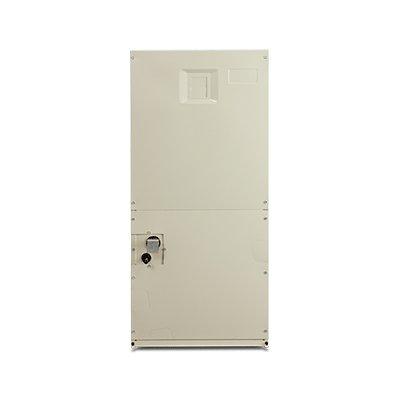Thermo King® and Trane® are strategic brands of Trane Technologies—a global climate innovator that brings sustainable, efficient climate solutions to buildings, homes, and transportation. Energy efficiency and commitments to sustainability are also important to many public transits.
As more transits move towards electric and other sustainable options for their vehicles, all the subcomponents of a system play a prominent role in the overall success of how a vehicle runs. This is especially true for All-Electric products, where a subcomponent’s efficiency will directly translate to the amount of range a bus can get.
With most zero-emission buses, the HVAC is likely the second-largest single electric load on the system. The refrigerant used within a system is the main component in how efficient a system will work. The catch is that not all refrigerants are recommended for all applications, so there is no “one size fits all” answer for any solution.
R407C
With the two main types of refrigerants used for bus HVAC systems (R134a and R407C), Thermo King uses both types and selects the refrigerant based on the application that it will be used in. For all-electric applications, Thermo King recommends the use of R407C, as it provides the most efficient results, especially in hermetically sealed systems.
- R407C is a higher pressure refrigerant than R134a, so it offers a better Coefficient of Performance in tightly sealed systems. Thermo King equipment is designed to effectively operate with higher pressure refrigerants and has done so with R407C for more than 10 years.
- Currently, Thermo King has over 15,000 all-electric light rail systems in service globally, and over 8,000 all-electric bus HVAC systems in service in North America, all using R407C.
- The price for R134a vs. R407C is comparable, with no significant cost advantage between the two. National Refrigerants, Inc. | Refrigerants.com | Refrigerant Distribution
- R407C does not lose significant efficiency or effectiveness if a leak occurs and can be easily topped off to recharge. To test that point, the refrigerant manufacturer DuPont, allowed a system to leak 50% of its charge in vapor form and then merely topped it off. They performed this procedure 5 times, which is an extreme situation, yet after the 5th recharge, the system was tested and had only lost approximately 9% of its original capacity.
One thing to note when researching one's refrigerant options is that comparing capacity and efficiency numbers can be easily misleading. Not all testing environments and situations are the same, so it is imperative that all results and claims state the conditions in which they were measured and performed. That will provide a more transparent view of how each refrigerant performs and allow a more consistent comparison of all the data.



















